For 2019 Infiniti has introduced an all-new QX50, a mid-size luxury crossover formerly known as the EX. The first generation Infiniti EX, renamed QX50 for the 2014 model year, was introduced in 2007 as a 2008 model. The second generation QX50 went on sale in 2018 as a 2019 model, last week we were given the keys to a brand new 2019 Infiniti QX50 Sensory 2.0T AWD, which is one trim below the top of the line “Autograph” trim.
Prices & Trims
In Canada the 2019 Infiniti QX50 is offered in five trims, with the base starting at $44,490 and the top of the line starting at $56,490. Below is a list of all trims and their starting prices, excluding freight and pde.
- QX50 Luxe $44,490
- QX50 Essential $48,990
- QX50 ProACTIVE $52,990
- QX50 SENSORY $56,490
- QX50 AUTOGRAPH $57,990
Our review QX50 for the week was the QX50 Sensory, with a total price tag of $58,535, with $0 in options and $2,045 for Freight & PDE.
Engine
The big news on the new QX50 is the engine, the VC-Turbo, which is the world’s first variable compression ratio engine. The engine is a 2.0 liter 4-cylinder turbocharged unit with direct injection, producing 268 horsepower at 5,600 rpm and 280 pound-feet of torque between 1,600 to 4,800 rpm. The 4-cylinder engine is mated to a Continuously Variable Transmission, sending power to all four wheels. According to Infiniti, the QX50 can do the 0 – 60 mph (96 km/h) sprint in 6.3 seconds and can reach a top speed of 230 km/h.
So, what is a variable compression ratio engine? The engine provides power when needed and is very fuel efficient when less power is needed. It does this by adjusting the compression ratio, which is achieved by raising and lowering the pistons’ reach. An average car can have compression ratios of anywhere between 8.0:1 to 12.0:1, which are static. The QX50’s compression ratios are dynamic and can be between 8:1 and 14:1. For more power, the compression ratio is on the lower end for more efficiency, it’s at the higher end of 14:1.
The end result is a more powerful engine that consume much less fuel than a similar engine without variable compression ratios. According to Infiniti, the QX50 should consume 10.0 L/100 km in city driving and 7.8 L/100 km on the highway, on premium fuel. For our weeklong review, we averaged a solid 11.0 L/100 km in pure city driving, according to the onboard computer, these drives were on the shorter side and I drove mostly in the “Standard” mode and I do have a pretty light right foot, so I’m able to squeeze a few extra kilometers per liter than our other writers. This number did drop to 10.0 L/100 km in the “Eco” mode, more on that later. The city fuel consumption numbers are pretty impressive, I usually get quite bad consumption on small turbocharged engines, all this complex technology does seem to work well in saving fuel and giving you a lot of power when needed. In pure highway driving, I managed 7.9 L/100 km, with my smooth driving, which is almost spot on with the claimed number.
Driving
Of the three Japanese luxury makers (Lexus, Acura, Infiniti), I’ve always thought of Infiniti as the sporty brand, and that’s what Infiniti would like us to think. The Infiniti QX50 is a pretty sporty crossover, as sporty as crossovers can get. As mentioned above, the small 2.0 liter engine produces a very good amount of horsepower and the max torque is available at 1,600 rpm, which makes this a very fun and fast vehicle to drive.
The QX50 comes with three driving modes and an additional “Personal” mode, which lets you adjust throttle response, transmission etc to your taste. The three modes are “Eco”, “Standard”, and “Sport”. These modes are self-explanatory and most/all vehicles in this class come with these modes.
The Eco mode is where you’ll save the most on fuel, this mode is a pretty standard mode and a lot of cars come with it. However, on the QX50 I found the Eco mode really does make you drive in a very efficient manner, other vehicles just reduce the throttle response a bit, but on the QX50, I literally felt like the accelerator pedal was being held up, it felt like there was a brick underneath it. This really reduced the throttle input, which I really liked (a car guy shouldn’t like this but the entire point of “Eco” mode is so you drive lightly and don’t burn as much fuel). In city driving I didn’t use this mode as much, as it made the car very slow off the line, I used it mainly on the highway.
The Normal mode is what I used in the city and it gives a nice amount of power, it’s good for the daily commute. The Sport mode makes things a bit sportier, as you’d expect. This mode is for when you want to have a little extra fun, I only used it for testing purposes, as I don’t drive a crossover like a sports car.
The 2.0 liter engine does a good job in city driving and there’s more than enough power for highway passing. The CVT transmission is fine, it does come with simulated gears which give it the feeling of a normal automatic transmission. Most people buying these vehicles would find the transmission to be just fine.
The QX50 comes with what Infiniti calls “ProPILOT Assist”, which is Infiniti’s version of driver assist/semi-autonomous driving. The system works great on the highway, it keeps the car really centered in the lane and makes the steering wheel feel very heavy, you don’t need to do much to the steering wheel other than keeping your hands on it. The cruise control smartly keeps at the set speed and can come to a complete stop if the vehicle in front of you stops, the automatic deceleration is also very smooth. This system also works in the city but it’s not as smooth.
My biggest complaint about the driving dynamics of the QX50 is the steering feel, on the top three trims Infiniti uses their “Direct Adaptive Steering”, which is a steer-by-wire system. The front wheels are not directly connected to the steering wheel (there’s an emergency direct connection that comes online in case of a failure in the steer-by-wire system). The steering feel is very vague in the Eco and Standard mode, in the Sport mode there is some feeling of a connection between the steering wheel and the wheels. However, I notice this system has improved over the last time I drove a Q50 a few years ago that was equipped with this type of steering.
There is a benefit to this steering system though; in parking lots, it’s super easy to turn the front wheels, it can be done using one finger. After driving the QX50, I drove a normal hydraulic steering car, the steering wheel felt extremely heavy in parking situations. Another benefit of this steering system is that when you’re on a bumpy road, you don’t get as much vibrations in the steering wheel, which would help with reducing fatigue.
Styling
Styling is a subjective matter, personally I like the look of the 2019 QX50. It keeps its styling looking like the rest of the Infiniti family of vehicles and looks quite sporty in my opinion. It looks just as good, if not better than most of its competitors, which there are a lot of.
The exterior design utilizes a lot of sweeping lines, giving the QX50 the look of motion even when it’s standing still. The front end of the QX50 is aggressive but not overly done, the large front grill and LED headlights (which are inspired by the human eye) give it a very sporty look. The hood is one of the most curvaceous hoods I’ve ever seen on a vehicle that’s not a sports car.
Our test car came with the 20” wheels, which are available only on the top two trims, however all the other trims come with 19” wheels, which is good size. The “dark tinted” 20” wheels looked great with the white exterior paint on our review car.
Interior
The interior on the 2019 QX50 is very nicely appointed, it’s very luxurious and has soft-touch materials where you expect and want them. The interior features two touchscreens, which some reviewers have complained about but for me personally, they are easy to use and keep thing separated (top screen for navigation output and the bottom screen for entertainment, climate control etc). The touchscreens are pretty responsive; however, I would have liked the graphics to be much crisper, the graphics on the QX50 (especially for the maps) look outdated.
Our test car had a mixture of leather and suede material in the front, which I really liked because it broke the monotony of an all-black interior found on some of the European competition. The dashboard and the doors also came with maple wood trim; however, I would have liked the color of the wood trim on the dashboard to match the trim on the doors, which would tie things together.
The layout of the interior is very simple and easy to get used to, everything is easily within reach. The stop/start button is placed in the most logical place I can think of (right next to the gear selector), but I still kept reaching behind the steering wheel to start/stop the engine, I think it takes a week or so to completely get used to it.
The interior has plenty of room and is very quiet. The 8-way power driver/passenger seats with 2-way power lumbar are very comfortable and can easily fit people over 6 feet tall, the front seats have 1,006 mm of legroom. I found the rear seats to also be very roomy and comfortable (983 mm of legroom), these seats can move forward and backward and can recline. The rear seats can be folded 60/40 for additional cargo space, the cargo area is a decent size, around 895 cubic liters with the rear seats pushed back, sliding the rear seats forward increases the rear cargo area to 1,822 liters. The rear also features a small under floor hidden compartment for keeping smaller items out of sight.
Technology/Safety/Convenience Features
The new QX50 is Infiniti’s most important model, according to the company, so it has to come with all the bells and whistles consumers have come to expect from a luxury crossover, and Infiniti doesn’t disappoint, below is a long list of features that are available on the 2019 QX50. The higher the trim, the more equipment you can expect, but even the lower trims are well equipped.
- LED headlights, taillights, fog lights, and turn signals
- Rain sensing wipers
- Adaptive headlights
- High beam assist
- 8-way power driver and front passenger seat with 2-way lumbar
- Heated and cooled front seats
- Leather covered heated steering wheel with power tilt/telescoping
- Heads-up display
- Tri-zone climate control
- Bluetooth hands-free phone system
- Auto dimming rear view mirrors
- Navigation system
- 4 USB outlets
- Active noise cancellation
- BOSE audio system with 16 speakers
- Pedestrian Forward Emergency Braking
- Predictive Forward Collision Warning
- Front & Rear parking sensors
- 360 cameras
- Blind Spot Warning
- Blind Spot Intervention
- Back-up Collision Intervention with Rear Cross Traffic Alert
- Lane Departure Warning
- Lane Departure Prevention
- Distance Control Assist
- ProPILOT Assist
Overall Impressions
I think the 2019 Infiniti QX50 is a great compact/mid-size crossover, it has a good looking design and has a lot of power, with sate of the art technology. Thanks to its variable compression ratio engine, it also has class leading fuel economy.
For more information on the 2019 QX50 and other Infiniti vehicles, please visit infiniti.ca.
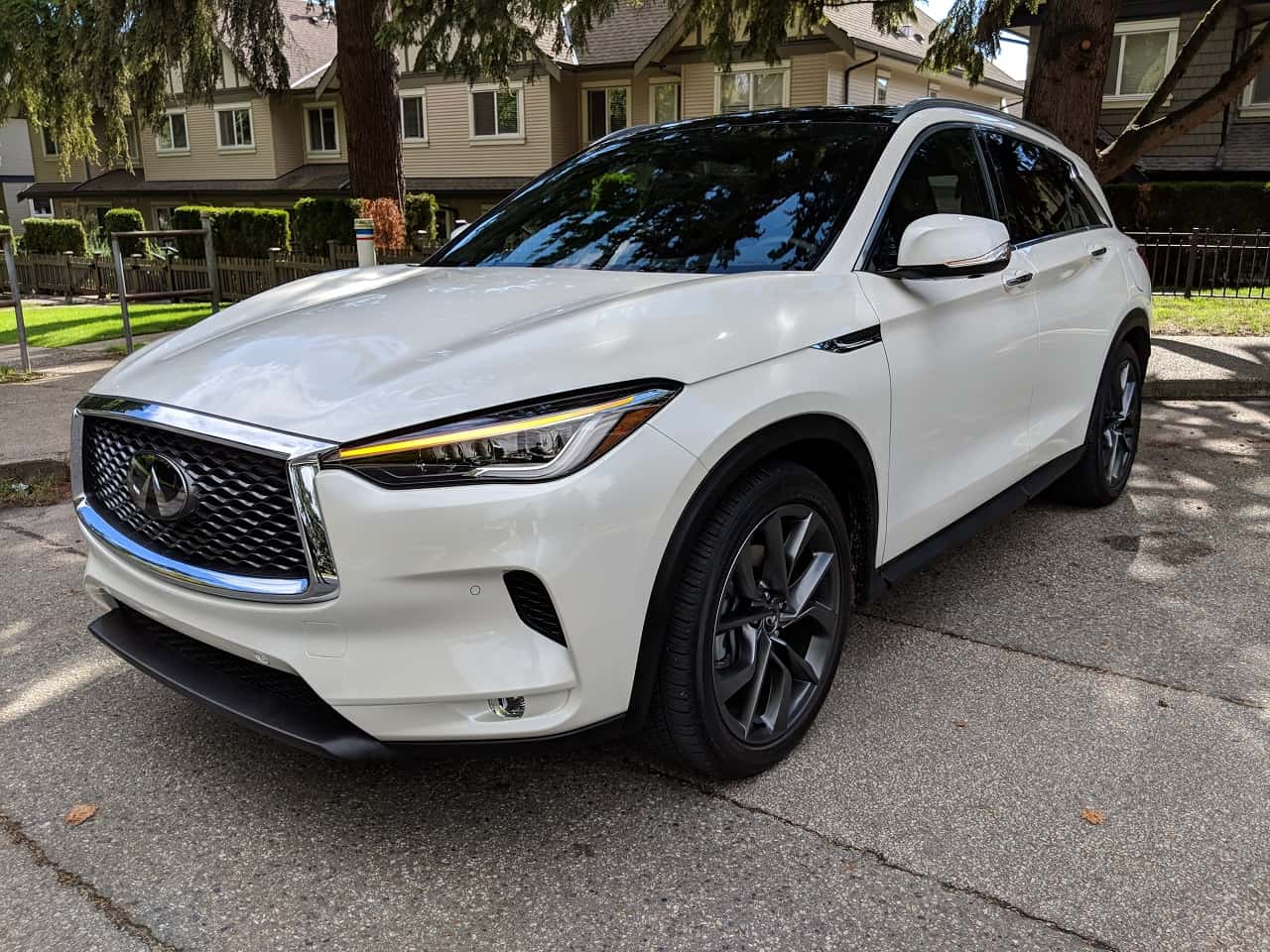
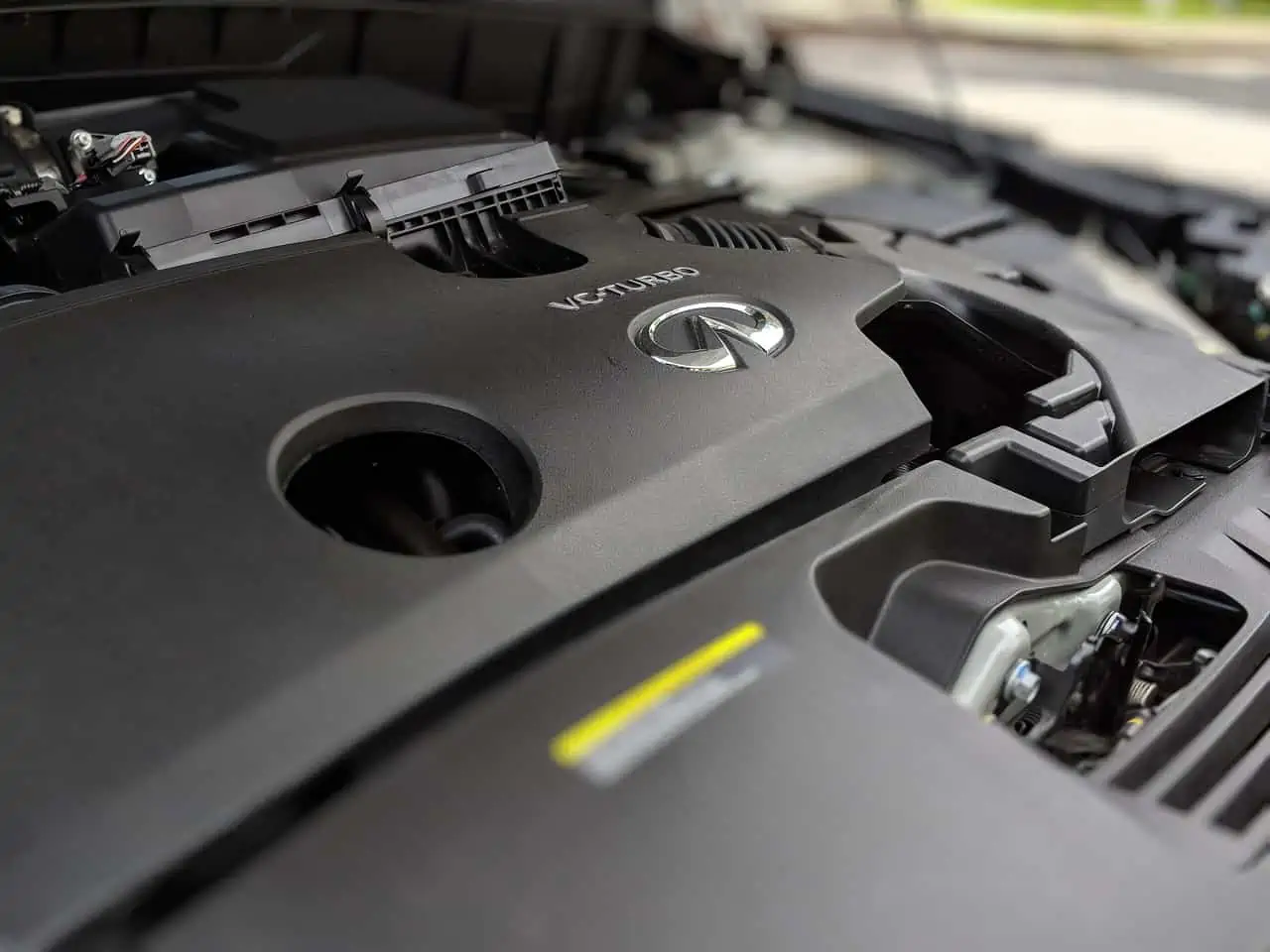
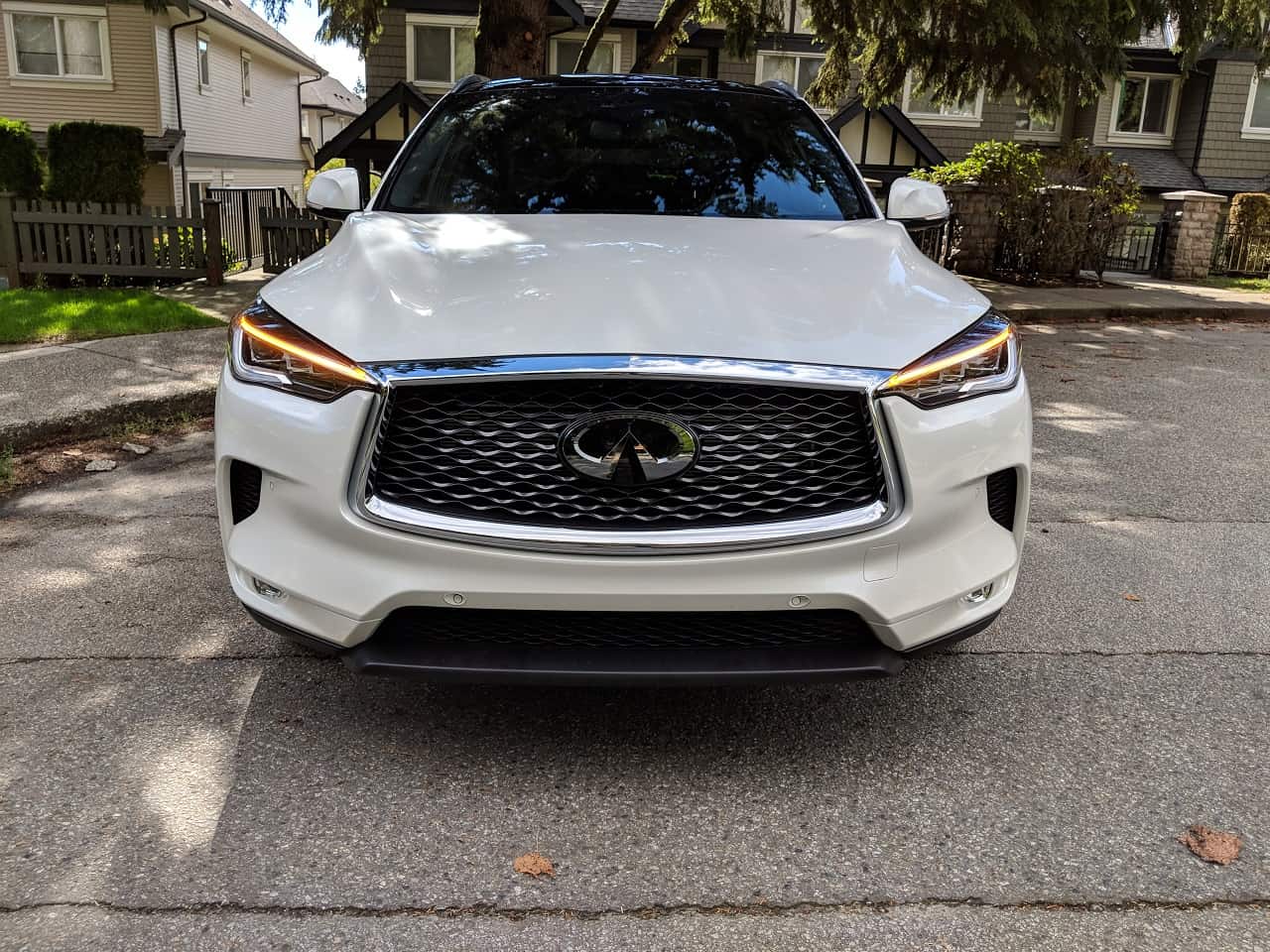
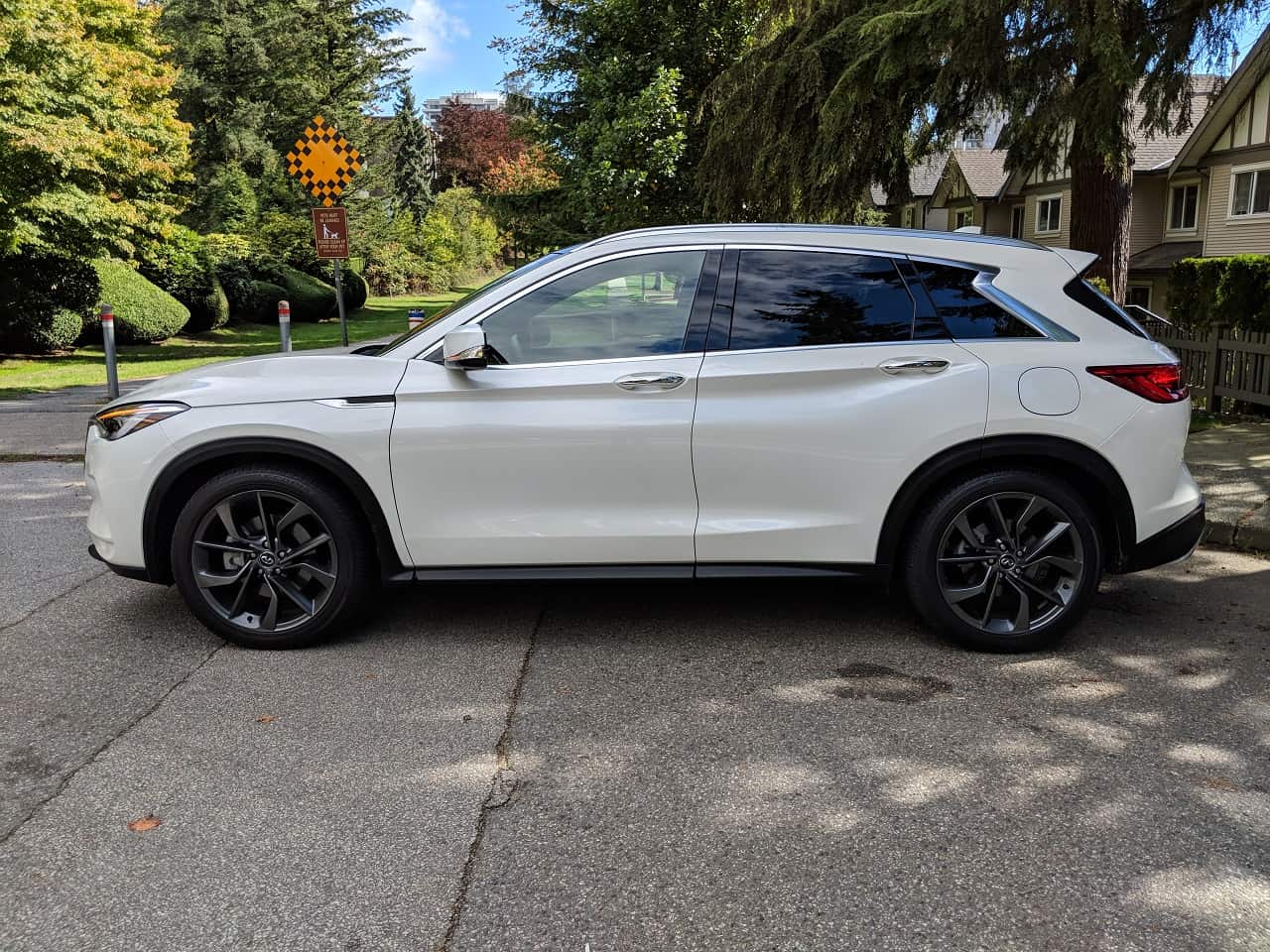
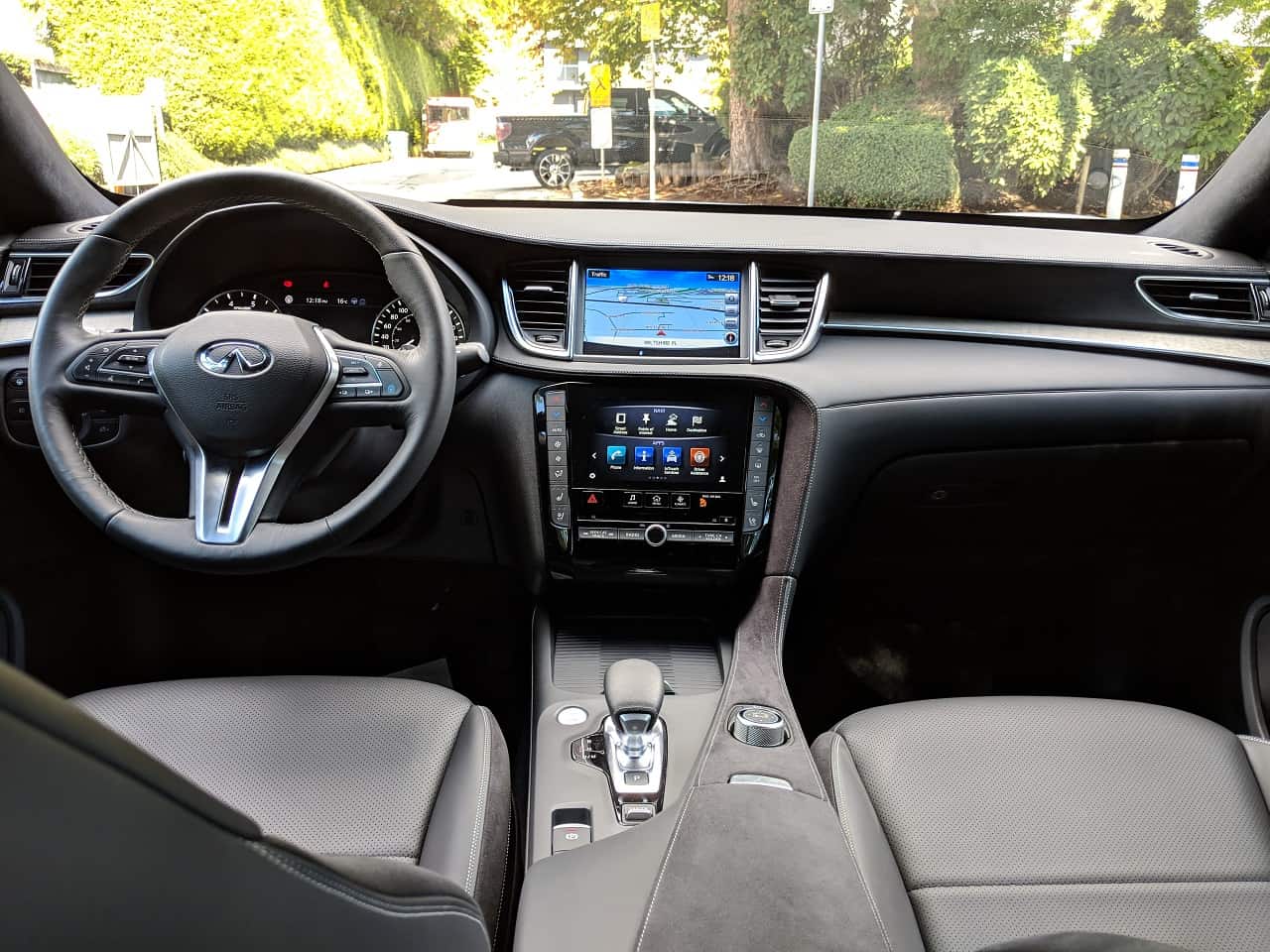
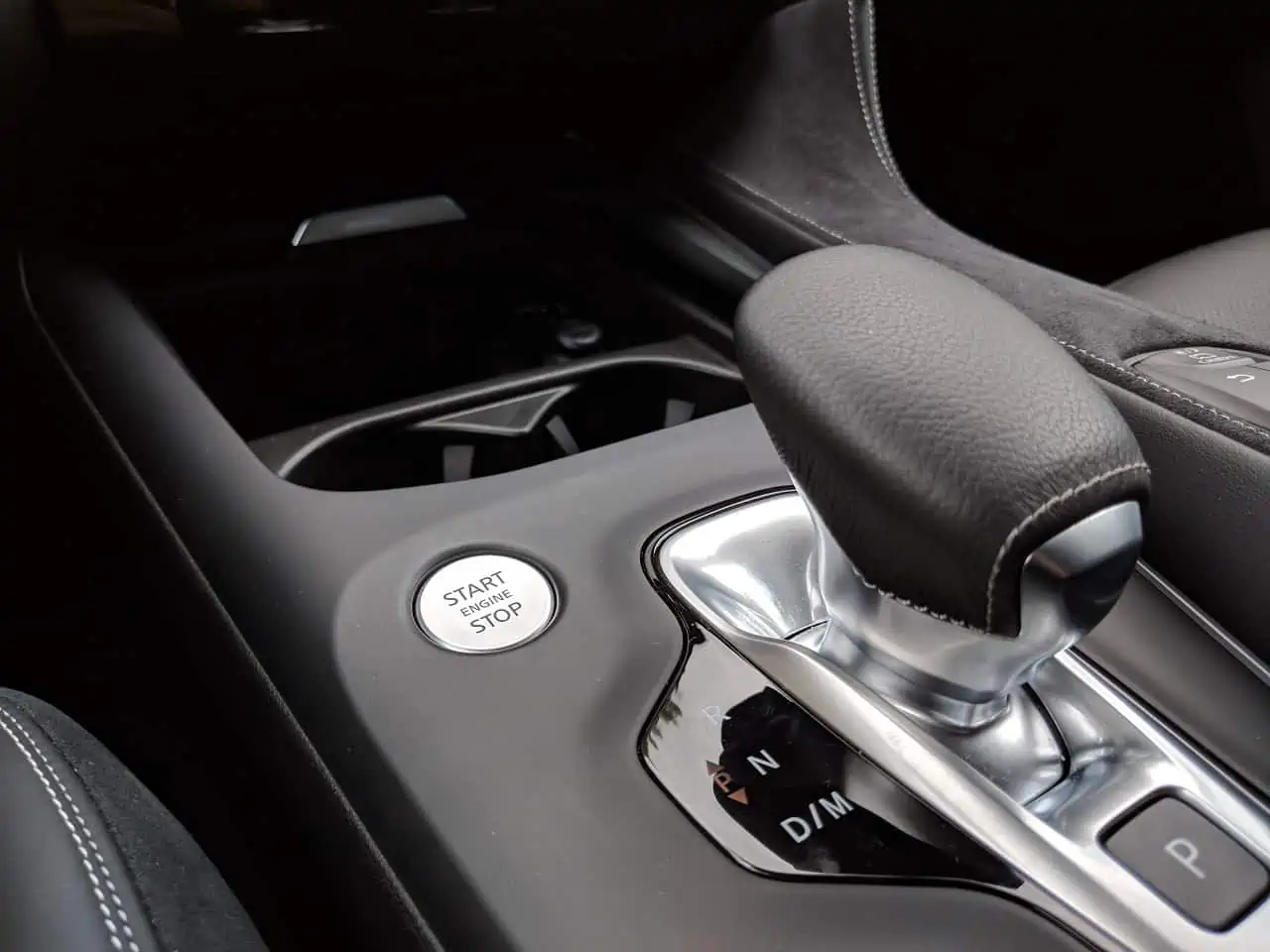
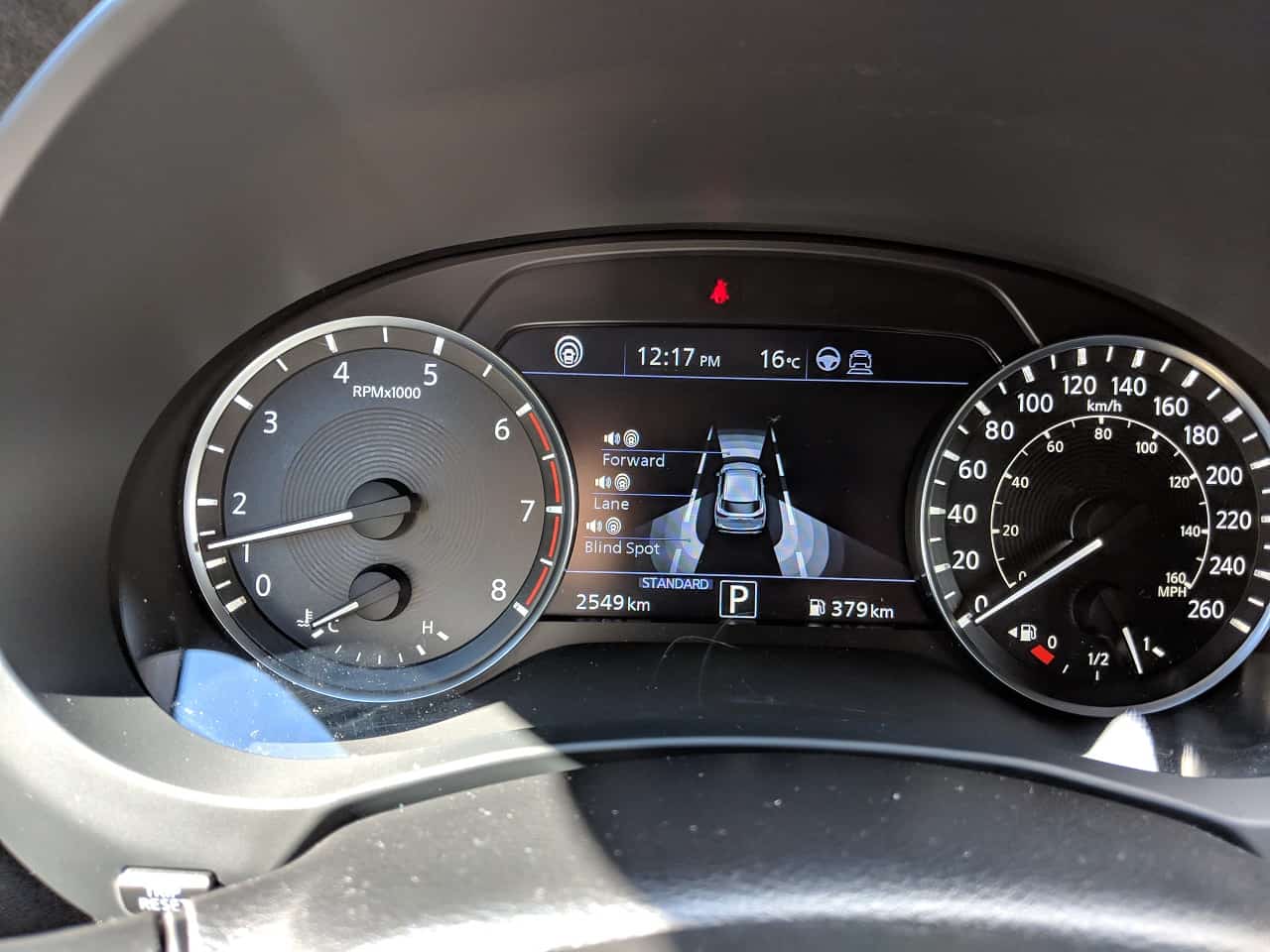
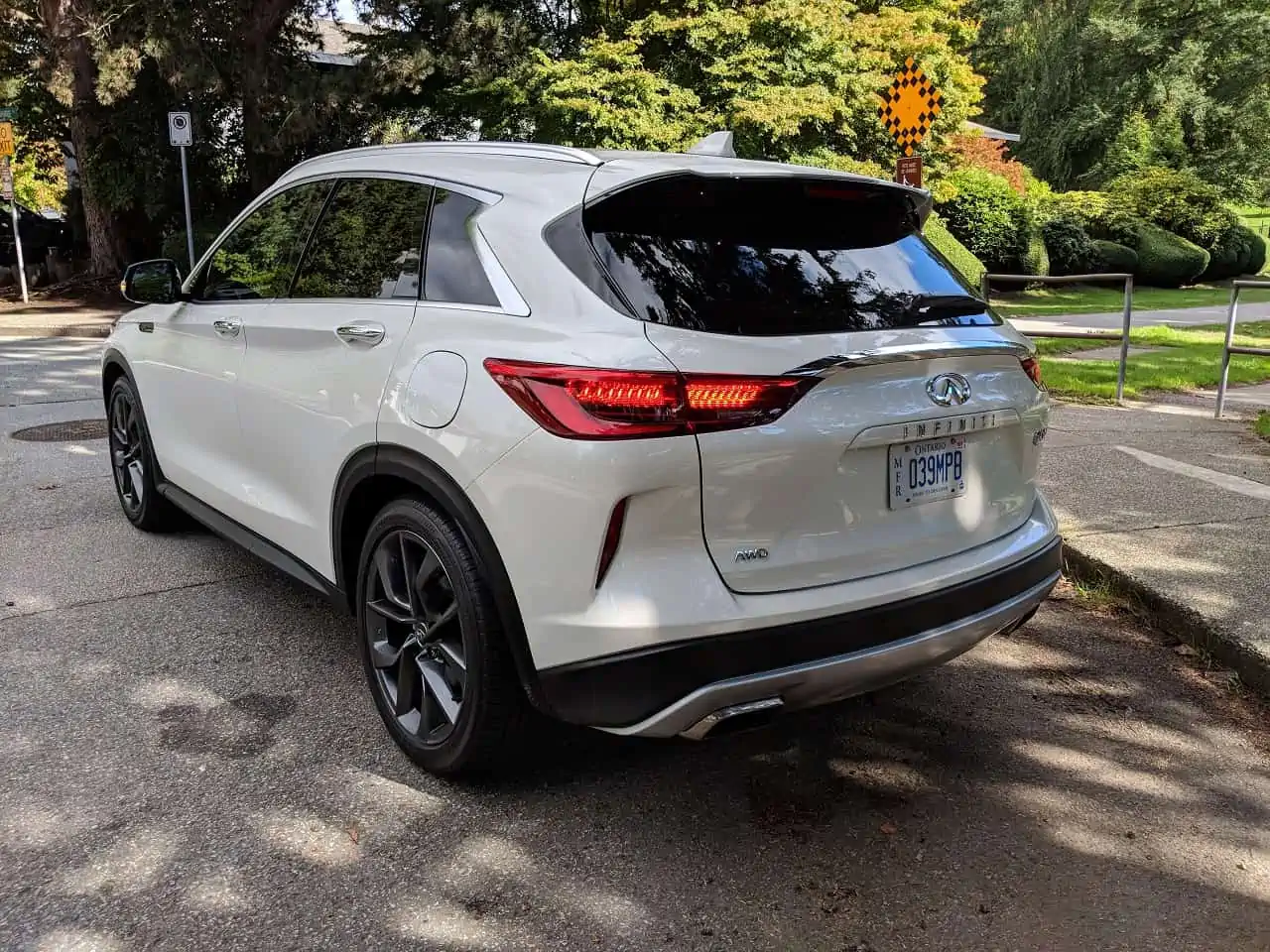

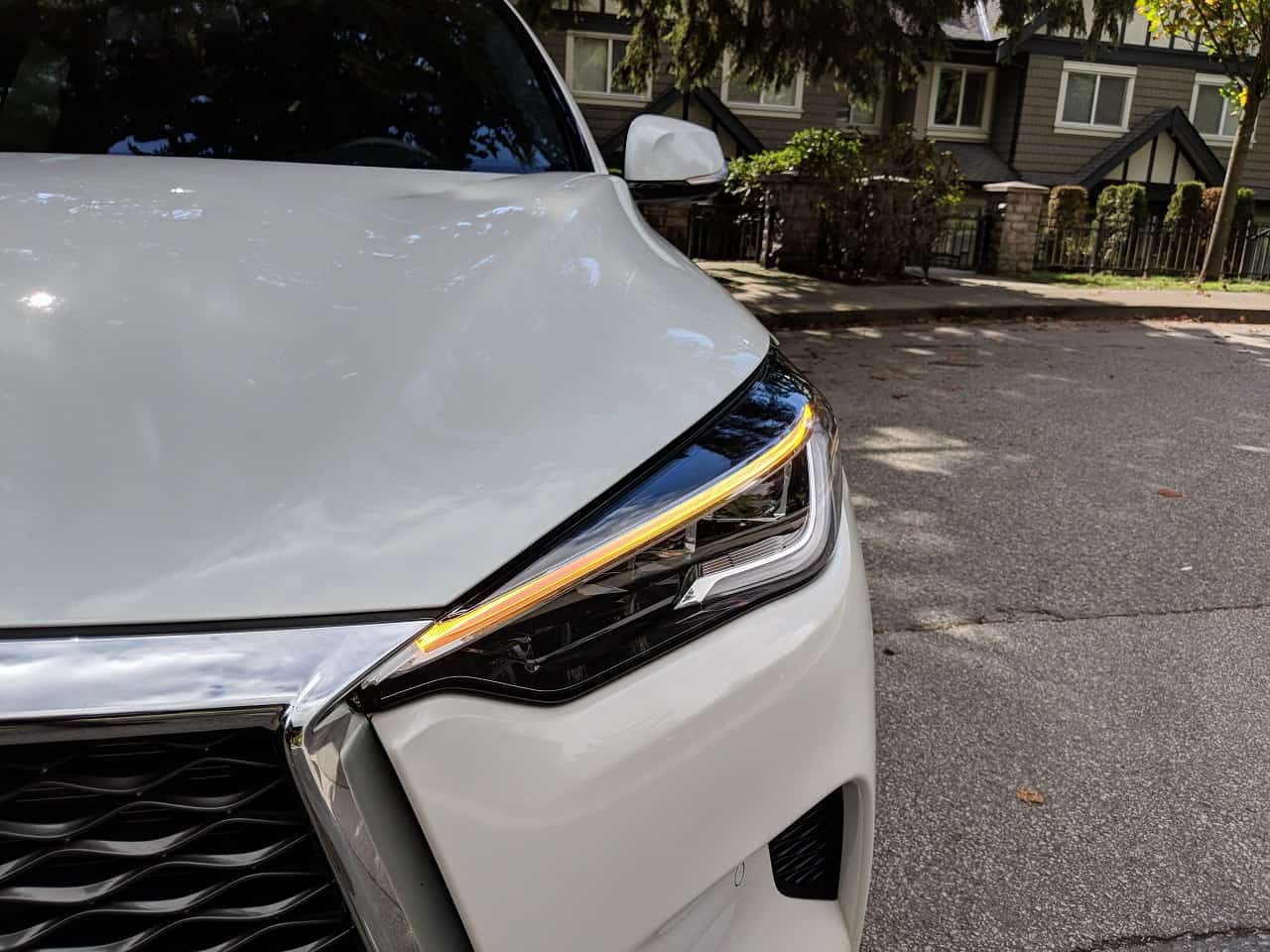
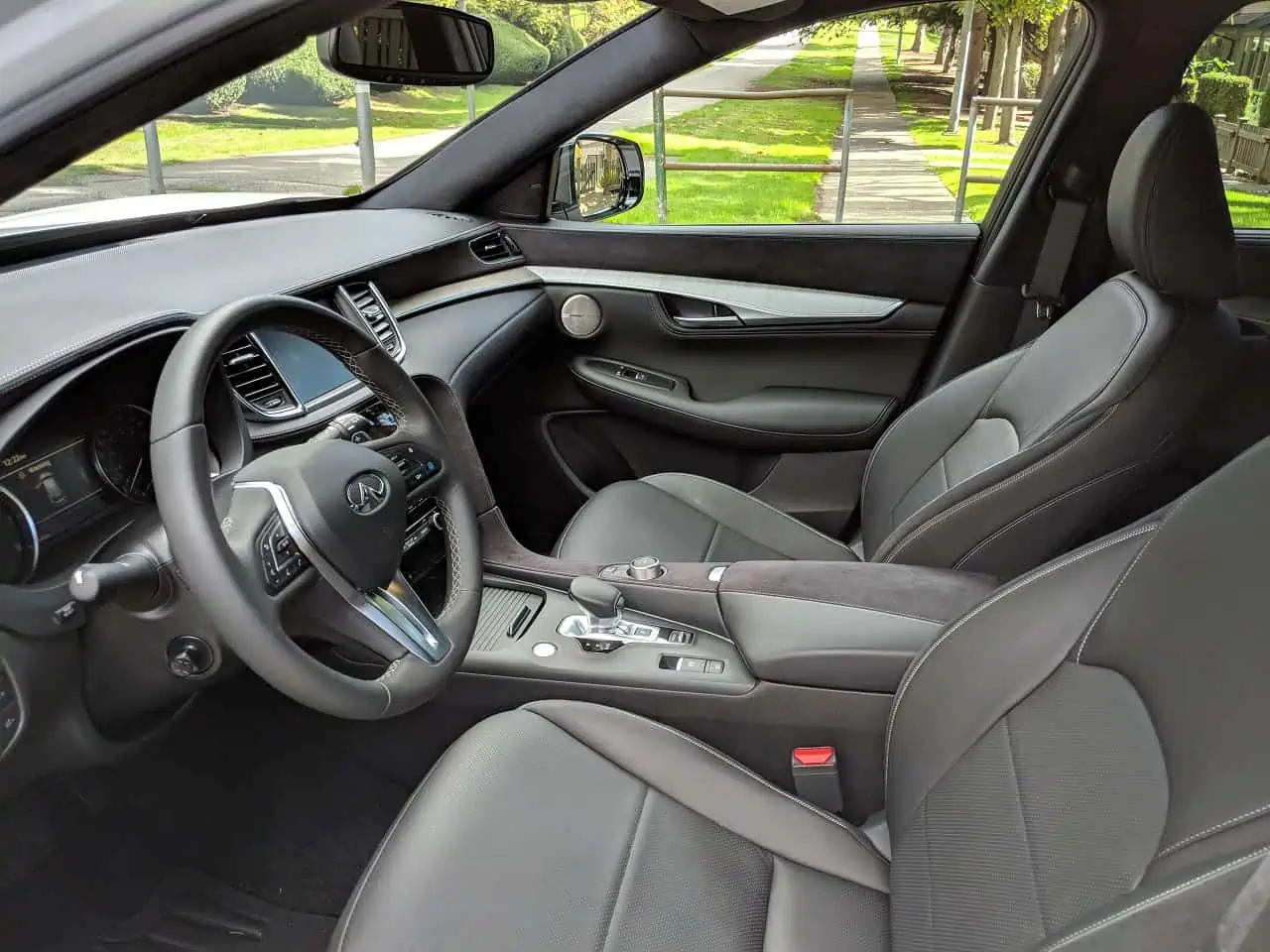
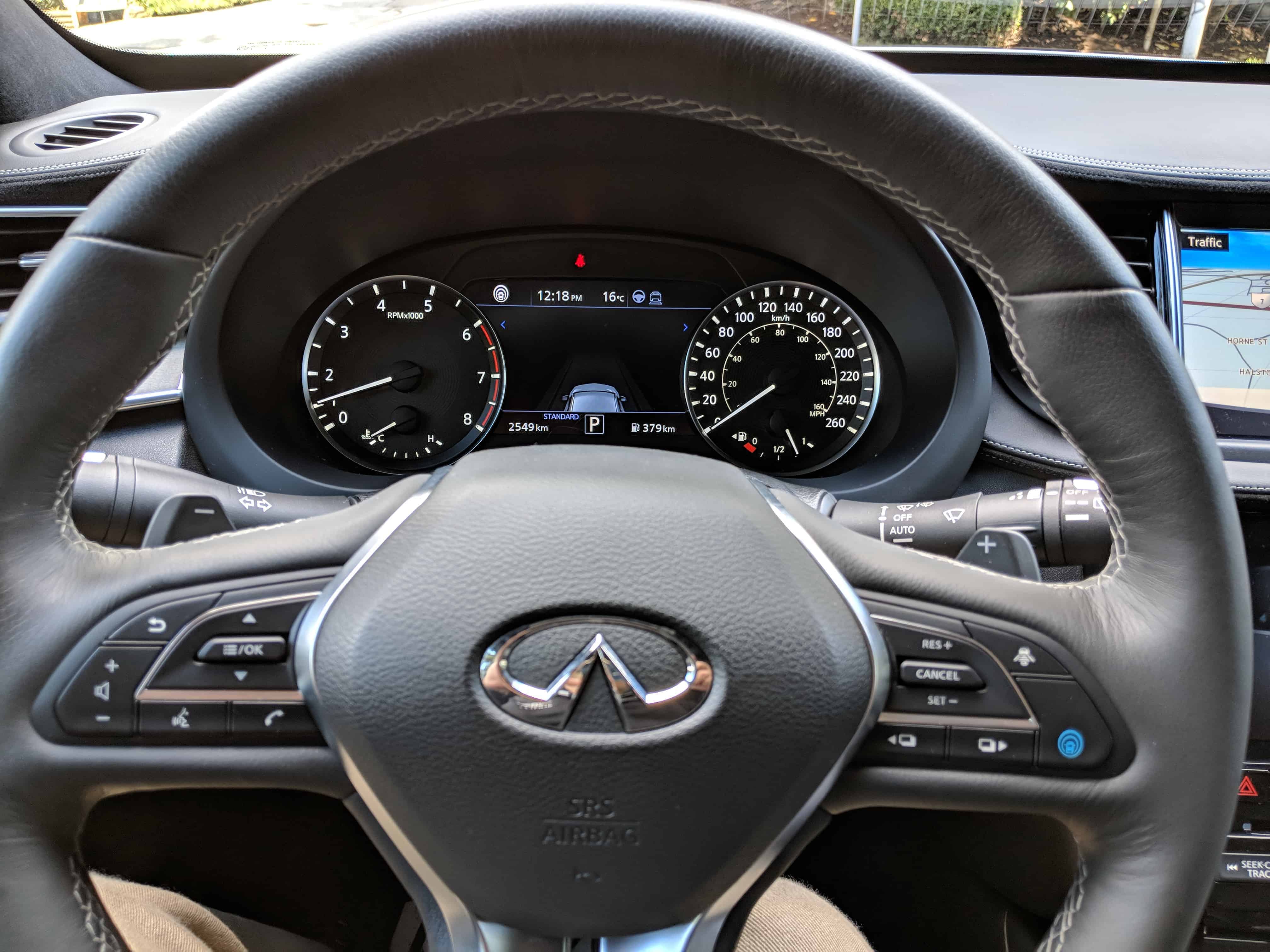
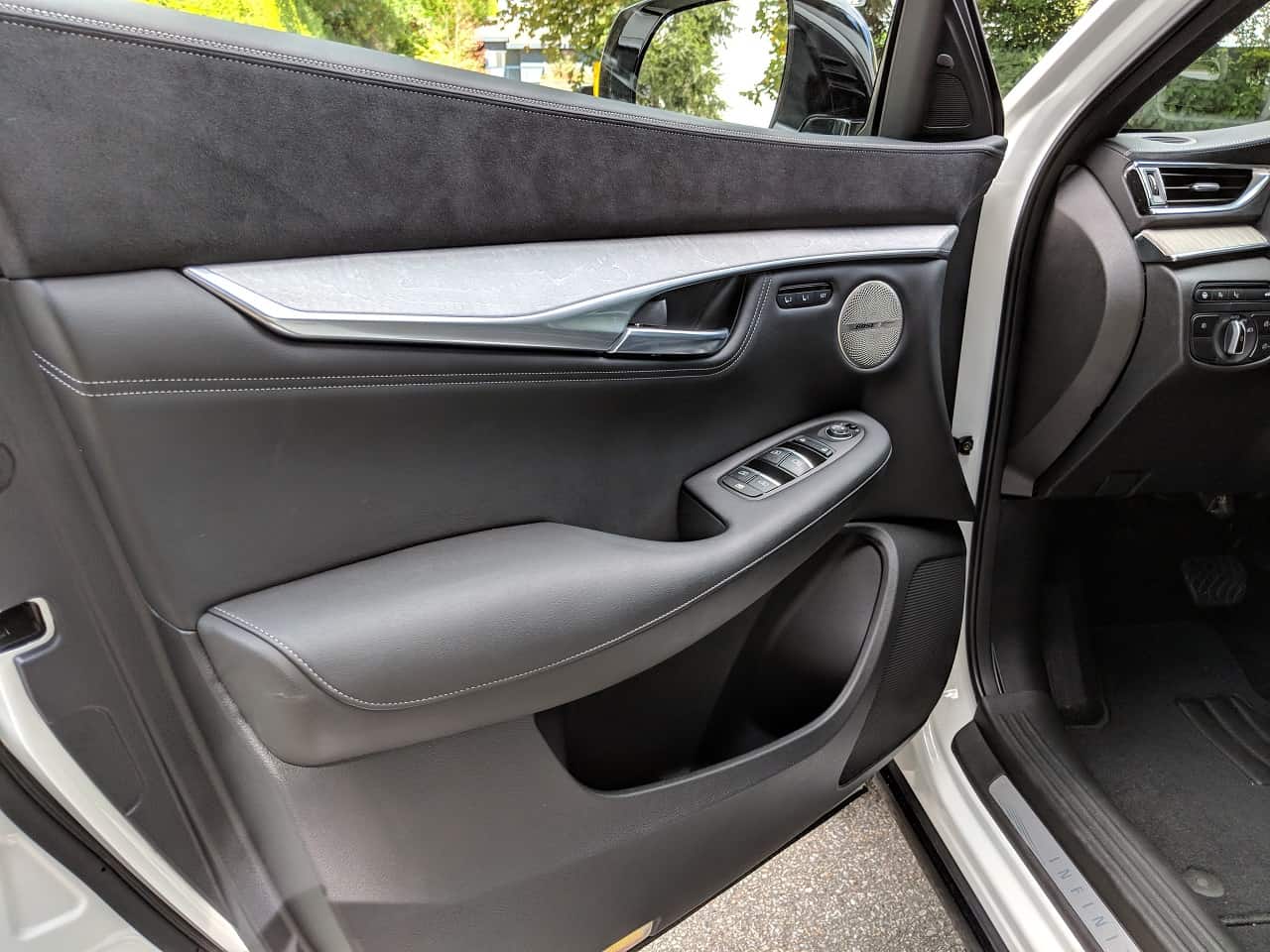
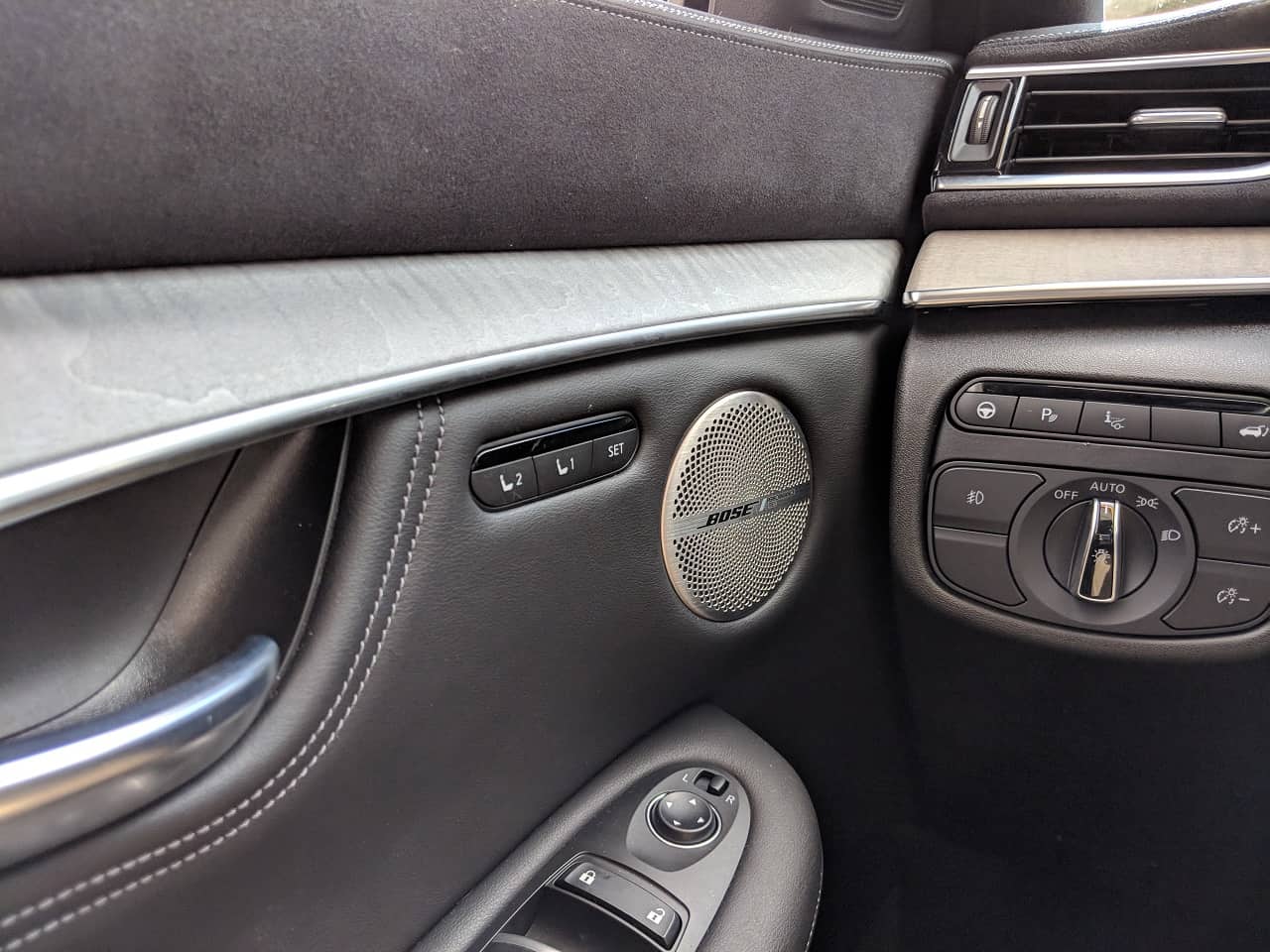
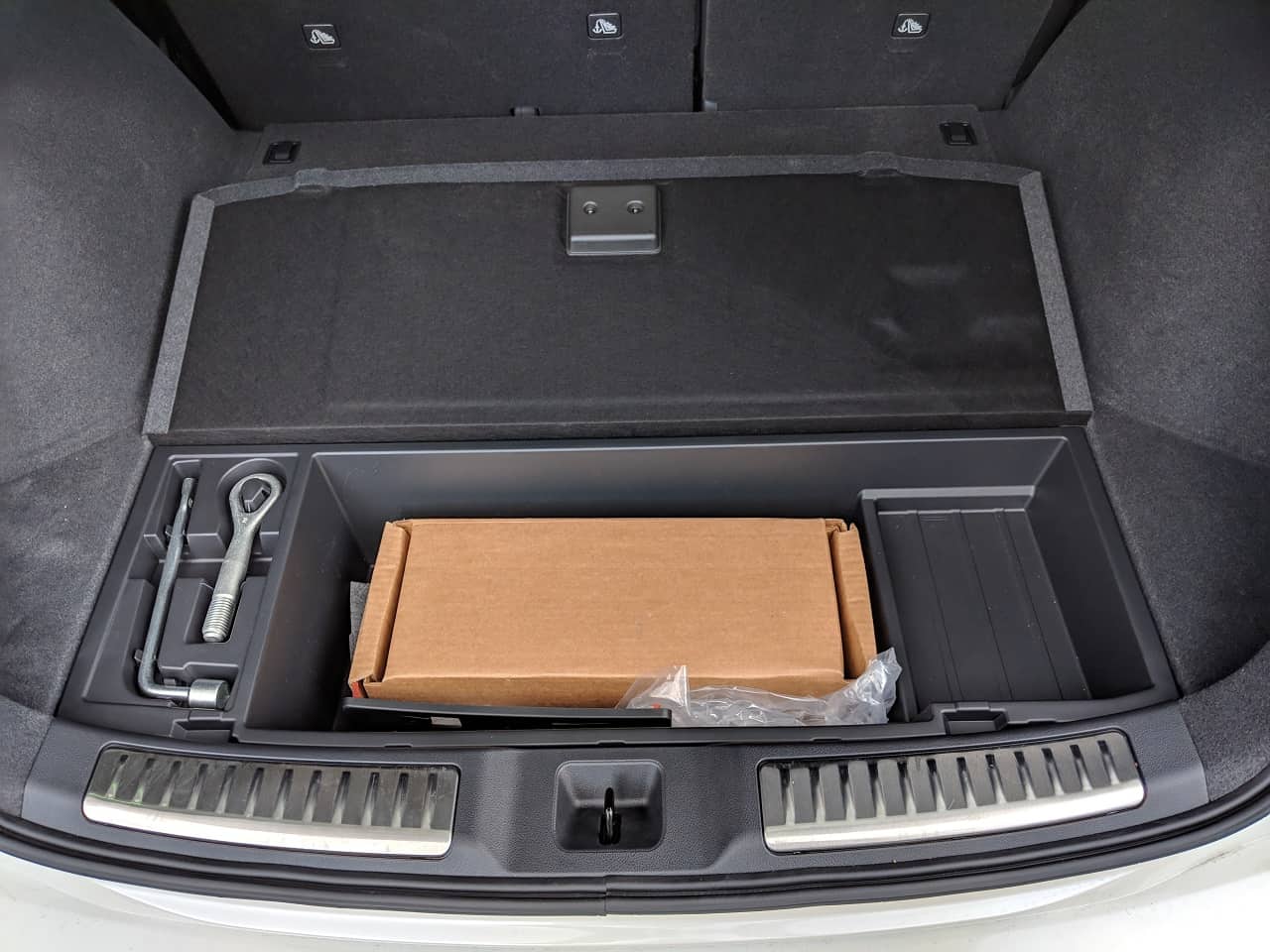

Where is the spare – tire.
There was a hydraulic piston proposed in the cylinder head for the early 50s flat-head Oldsmobile six-cylinder engine. It reduced the combustion chamber size to raise the compression depending on the engine load. That seems like a much simpler system than the articulated connecting rod used in this engine as discussed in this article.